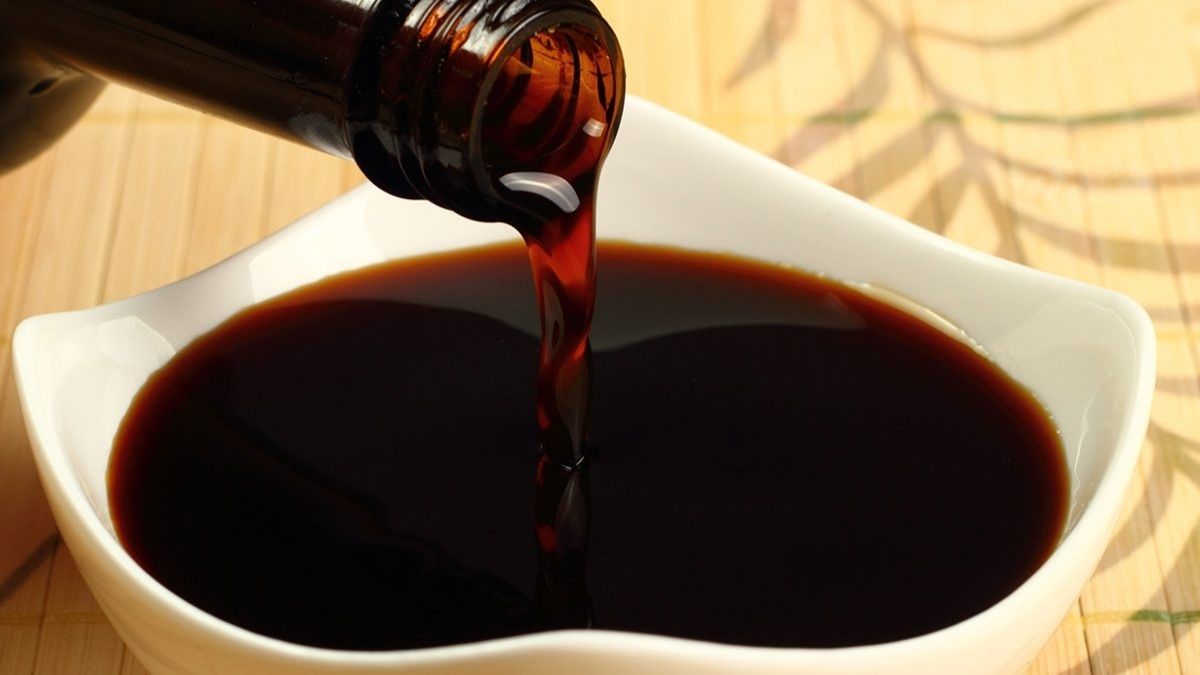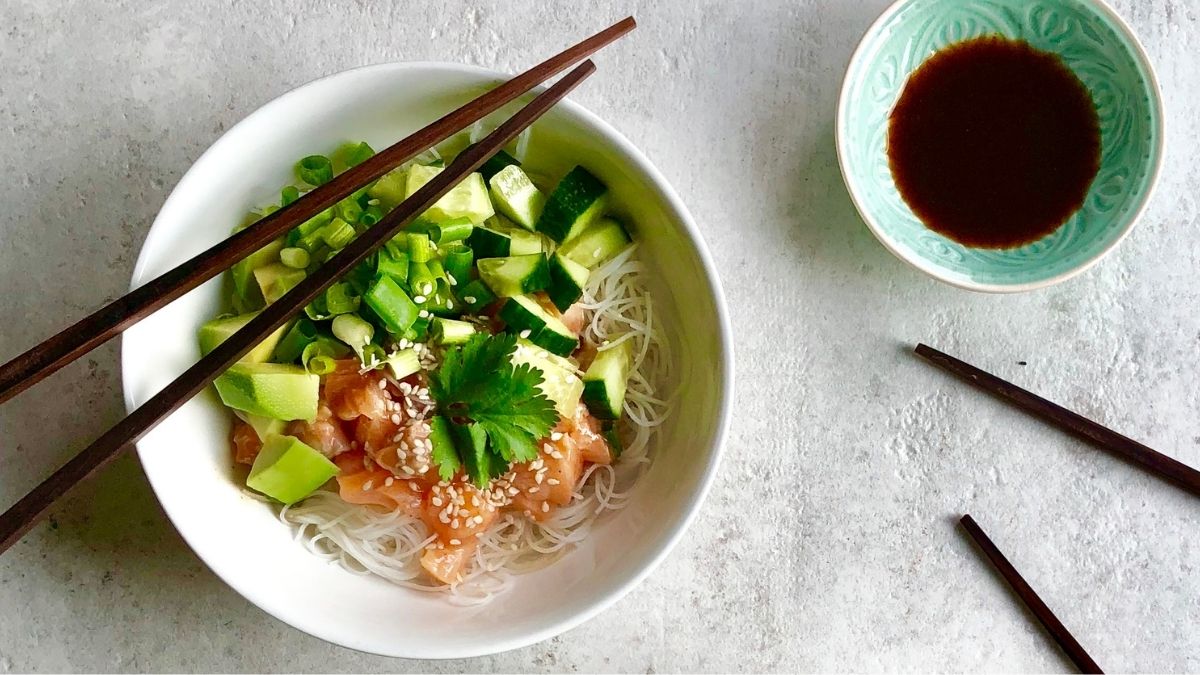You might be wondering what Tamari is made of and how to utilize it properly. Tamari (or tamari shoyu) is a fermented soybean sauce from Japan. It has a thicker consistency than Chinese soy sauce and a more balanced flavor, making it an excellent dipping sauce. It’s also gluten-free and vegan. Use Tamari straight from the bottle to add salt, umami, and extra nutrients to food.
It, commonly known as tamari shoyu, is a common Japanese sauce. It’s famous all over the world for its rich flavor and the fact that it’s vegan and gluten-free. It should be kept in its original container in a cool, dry, dark location, such as the pantry. It is not required to be refrigerated. However, it will not lose flavor if kept in the refrigerator. It containers that have been opened can be tightly capped indefinitely.
What is Tamari?
It is one of five common varieties of shoyu (Japanese soy sauce). Shoyu is prepared by fermenting soybeans (and occasionally wheat) with a koji and brine fungus. Kikuchi, Shiro, usukuchi, and sai-Nishikori are the other forms of shoyu. Each is distinct in fermentation, thickness, flavor, and wheat content. It is darker than most soy sauces, contains little to no wheat, and has a greater umami flavor.
Umami is a Japanese word that refers to the distinct flavor of three amino acids found in both plant and animal proteins. Kimchi, seaweed, soy products, and aged meats and cheeses are examples of umami foods. Although certain kinds contain traces of wheat, most Tamari is gluten-free, wheat-free, and vegan. Other soy sauces usually contain a lot of wheat, making them inappropriate for gluten-free persons.
They’re also often lighter in color and sweeter in flavor. Chinese soy sauce, which is saltier than Tamari, is the most common variety of soy sauce in North America. Furthermore, it contains gluten. Although you might think of soy sauce as a single condiment, there are hundreds of soy-based sauces from Asia, each with different flavors, hues, and consistency.
It is one of these sauces, and it has a particular flavor because it is produced differently than other soy sauces. It is made by pressing the liquid that drains from an aged miso paste (fermented soybean paste). On the other hand, Soy sauce is prepared from soybeans, wheat, and other grains that have been fermented and brewed. It is usually more expensive than soy sauce.
How to Use Tamari?
Tamari is an excellent dipping sauce because of its consistency and balanced flavor. Tamari is a better dipping sauce for sushi than soy sauce since it is not as salty as soy sauce. It can also be used straight from the bottle as a condiment for noodles, dumplings, fish (particularly uncooked, like sashimi), and tofu in soups, stews, marinades, stir-fries, and Asian sauces.
It is also a favorite condiment for roasted nuts, particularly almonds when combined with a little sugar. Tamari is a popular ingredient in stir-fries, soups, sauces, and marinades. Tofu, sushi, dumplings, noodles, and rice can all benefit from the addition of this flavor enhancer.
It’s a good dip because of its gentle and less salty flavor, and it may be used in place of soy sauce in most recipes. Its umami flavor adds a delicious bite to vegetarian and vegan foods generally associated with meat-based dishes. It is available online and in most grocery stores. If you avoid gluten, seek a gluten-free label or check the ingredient list to ensure it doesn’t include wheat.
Tamari vs. Soy Sauce
While there are numerous variations of soy sauce available throughout Asia, It is unique to Japan. But the most significant distinction between Tamari and other soy sauces is that Tamari is frequently manufactured without wheat. In contrast, soy sauce is frequently made with wheat (up to 50 percent of its total content).
It likewise contains fewer components than soy sauce, with simply water, soybeans, and salt. Wheat and a preservative like sodium benzoate are generally seen on the ingredient list of a normal bottle of soy sauce. Due to the change in components, it has a stronger flavor, thicker viscosity, and darker hue than traditional Chinese soy sauce.
You can use Tamari instead of soy sauce, albeit you may prefer one flavor over the other or prefer to use each for a specific culinary purpose. As previously stated, Tamari is normally brewed without wheat or with trace amounts of wheat. On the other hand, Soy sauce is made from soybeans and wheat. It often has a higher protein content due to changes in brewing procedures, and Tamari is visibly darker and thicker than soy sauce.
What does it Taste Like?
Because of its 100 percent soy composition, Tamar tastes like a mellower, less salty, and more subtle soy sauce. Traditional soy sauce contains wheat, which gives it a harsh, almost vinegar-like flavor that Tamari lacks.
On the other hand, Tamari is high in umami, a rich, savory, “mouthwatering” flavor found in beef, cooked mushrooms, tomato paste, aged cheeses, and dried fish that can be added to give vegetarian and vegan dishes a meatiness.
Tamari has a somewhat mellower umami flavor than soy sauce. Because the sauce is produced with a high percentage of soybeans, it has a rich, thick texture and a more subtle salinity than other soy sauces.
Compared to soy sauce, Tamari has a richer, more complex flavor. Tamari, unlike soy sauce, does not come in light or dark varieties. Tamari can, however, be found in low-sodium varieties. It is more expensive than soy sauce since it includes more protein and fewer additives.
Where to Buy Tamari?
Asian cuisine has become more mainstream in recent years, and it has been easier to obtain a wide range of Asian ingredients, including Tamari.
Tamari should be available in glass bottles (or huge plastic jugs in bulk) next to the soy sauce in an Asian/international department of a well-stocked store.
If your local supermarket does not have it, look for it in an Asian, foreign, or health food store, or get it online.
Although nearly all tamari variants available in the United States are gluten-free, they may still contain trace amounts of wheat. The Tamari you find will certainly be gluten-free, making it suitable for anyone following a gluten-free diet. Regular Kikkoman tamari, on the other hand, is not gluten-free. However, they offer a gluten-free tamari that is clearly labeled as such.
How does Tamari Differ from Soy Sauce?
Tamari is a form of soy sauce, technically. Its procedure, however, distinguishes it from ordinary soy sauce. Soy sauce is traditionally created with four key ingredients: soybeans, water, salt, and wheat. Using koji and more, these materials are fermented for several months.
Finally, the liquid is extracted by pressing the mixture. On the other hand, Tamari is typically formed as a byproduct of miso paste manufactured from soybeans, salt, water, koji, and more. It is fermented as well. However, unlike typical soy sauce, it contains little to no wheat.
Traditional soy sauce has a 1:1 ratio of soybeans to wheat, but Tamari includes very little of this grain. As a result of the high soybean content, Tamari has a greater umami flavor, whereas soy sauce is sweeter due to the addition of wheat.
What is a Good Substitute for Tamari?
If you’re not using Tamari as a gluten-free soy sauce substitution, soy sauce is the closest substitute—their flavors are nearly identical. In a pinch, you can utilize the following umami-rich ingredients:
- Miso
- Fish sauce (used sparingly)
- Liquid aminos or coconut aminos
- Anchovies
If you’re not using Tamari as a gluten-free soy sauce substitution, soy sauce is the closest substitute—their flavors are nearly identical. In a pinch, you can utilize the following umami-rich ingredients:
Which is Healthier: Tamari or Soy Sauce?
Tamari and soy sauce have similar nutritional profiles and are both heavy in salt, so you should limit your intake regardless of which you choose. Wheat is added to soy sauce during the manufacturing process, but no grains are added to Tamari during the cooking process. If you have a celiac illness or gluten intolerance, you should stick to Tamari. (However, always double-check labels to ensure that the food is gluten-free.)
It has a slightly higher protein content than soy sauce, but this is a minor variation that won’t impact your daily dietary objectives because both are used in tiny amounts. Another distinction between Tamari and soy sauce is that it is less likely to include additives, which is why it is commonly seen in health food stores and restaurants. It is the sauce to use if you attempt to live a healthy lifestyle.
Conclusion
It (gluten-free soy sauce) is a form of soy sauce. Many dishes, such as stir-fries, tofu, soups, and rice or noodle-based meals, benefit from its umami flavor. Give this unique sauce a try if you’re seeking a gluten-free alternative to soy sauce or want to change things up. Just make sure your product is gluten-free by reading the label.
It is a gluten-free Japanese soy sauce prepared from fermented soybeans, and it’s darker, less salty, and has a more pronounced umami flavor than most soy sauces. Tamari is a gluten-free Japanese soy sauce prepared from fermented soybeans, and it’s darker, less salty, and has a more pronounced umami flavor than most soy sauces.


